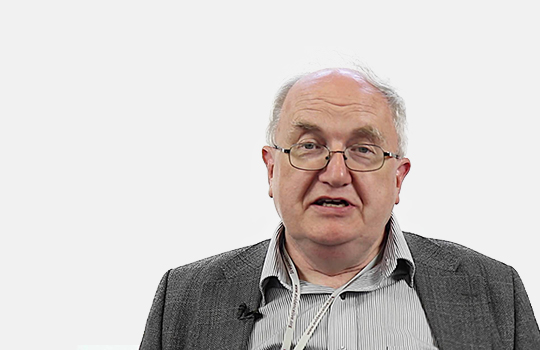Richard Lehman reviews the latest research in the top medical journals
 NEJM 27 Apr 2017 Vol 376
NEJM 27 Apr 2017 Vol 376
Adalimumab for uveitis—success & toxicity
Uveitis in children and adolescents who have juvenile idiopathic arthritis (JIA) is common and serious. Up to a third of kids with JIA get eye involvement, and 15% out of these may get bilateral disease of sufficient severity to characterise them as permanently blind. Fortunately, the absolute numbers are not great, but for the affected children this is a potentially disastrous condition. Adalimumab is a monoclonal antibody against tumour necrosis factor, which is frequently combined with methotrexate in the treatment of JIA. Last year, before the patent for Humira ran out, it brought in $16 billion to its manufacturer. It is now available at one thirtieth of the price. Just thought you might like to know, in case anyone calls you a pharmascold. At the time of the SYCAMORE study, it was clearly considered a matter of clinical equipoise whether the addition of adalimumab to methotrexate would improve outcomes in JIA-associated uveitis, so this was a placebo controlled trial, publicly funded in the UK. The conclusion states that “Adalimumab therapy controlled inflammation and was associated with a lower rate of treatment failure than placebo among children and adolescents with active JIA-associated uveitis who were taking a stable dose of methotrexate. Patients who received adalimumab had a much higher incidence of adverse events and serious adverse events than those who received placebo.” I think that may be something of an overstatement: the absolute rate of all adverse effects in the active group was 10 per year compared with 6.5 in the placebo, and for serious adverse effects, 0.29 vs 0.19.
JAMA 25 Apr 2017 Vol 317
Delayed colonoscopy after positive faecal blood
I once called faecal occult blood (FOB) screening prior to colonoscopy “smelly randomisation,” because the figures from the study in question suggested that it had such low discriminative value. The evidence has swayed back and forth since then, and FOB is still quite widely used as a first stage screening test for bowel cancer. Here is a retrospective study from Kaiser Permanente in California, which doesn’t settle the question of how FOB testing should be used, but does suggest that if it’s positive, you should have a colonoscopy within a year. I’m amazed that anyone with a positive FOB in the Kaiser system doesn’t get a colonoscopy within a month. In fact, most do, but those who experience a delay beyond 10 months, for whatever reason, tend to have more cancers and more that are advanced.
JAMA Intern Med April 2017 Vol 177
Old donors give good blood
I’m not enough of a Buffy fan to know if there are vampires who specialise in older people: all I know is that the Count himself seems to have gone exclusively for posh young ladies. And now there is a vogue for using young blood to rejuvenate old people. I must try this soon. However, if all you need is a transfusion to prevent death from exsanguination, old blood will do perfectly well, at least in Scandinavia. Among nearly a million people who received blood in Sweden and Denmark, the age (or sex) of the donor made no difference to overall mortality.
Questions about sexual orientation
A classic of the “preference gap” literature is a study of women’s preferences about breast conservation in cancer surgery. This revealed a huge gap between clinicians’ guesses about what women prioritised and what actual patients wanted. Here is another paper that could become a classic. It’s a mixed methods study exploring emergency room clinicians’ attitudes towards asking about sexual orientation in consultations. Seventy eight per cent of clinicians opined that patients would refuse to provide such information. But when a mixed group of potential patients of various sexual orientations was asked, only 10% said that they would refuse.
The Lancet Apr 29 2017 Vol 389
All you need to know about Crohn’s
The last time I swotted up on Crohn’s disease was in 1973, when as a student I first encountered a case on the wards. I learnt that it was first described by Burrill Bernard Crohn, an American gastroenterologist in 1932, and that its prevalence was greatest in the colder countries of the Northern hemisphere, with a typical delay between first symptoms and diagnosis of six years. A popular theory at the time was that it might be due to the consumption of cornflakes. In 2017 I learn from Wikipedia that it was first described by Polish surgeon Antoni Leśniowski in 1904, and that cornflakes have been replaced as the likely cause by mucosa-invading infection or dysbiosis. From a truly excellent update in the Lancet I gather that one culprit bacterium might be mucosa associated adherent invasive Escherichia coli, although the long running favourite, Mycobacterium avium subspecies paratuberculosis, remains in contention. I won’t go into more detail as I just wanted to understand the context of the two original papers on Crohn’s that go with this article. I do, however, want you to share my joy in being reminded of Paneth cells: “Paneth cells are specialised secretory cells located at the base of the crypts of Lieberkühn.” Wow, I once knew that, 40 odd years ago. I think. So nice to meet Paneth and Lieberkühn again after all these years. But I’ll leave you with this gloomy summary of clinical progress from Wikipedia May 2017: “There is no cure for Crohn’s disease and remission may not be possible or prolonged if achieved.”
Rizankizumab v placebo for new Crohn’s
So, 113 years since it was first described, this disease is still not understood or effectively treated. I needed to know that, because I was puzzled at the inclusion of a placebo group in a trial of initial treatment in active Crohn’s disease. Was this ethical? Perhaps, since the alternative would be steroids, and they don’t have a lasting effect. The active drug here was a new humanised monoclonal antibody targeting the p19 subunit of interleukin-23, rizankizumab. This trial, like one I reported on about the same antibody for psoriasis last week, was funded, designed, analysed, and written up by Boehringer Ingelheim. So here is an antibody in search of a target, and when it has found it, it will bind strongly to many many dollars. However, all that can be said for the moment about this phase 2 trial is that “In this short term study, rizankizumab was more effective than placebo for inducing clinical remission in patients with active Crohn’s disease. Therefore, selective blockade of interleukin-23 via inhibition of p19 might be a viable therapeutic approach in Crohn’s disease.” So watch this space. Or perhaps watch other spaces.
Stratifying kids with Crohn’s
From my bit of reading, I suspect that Crohn’s disease has multiple aetiologies and it certainly has multiple presentations and trajectories. One drug may not cure all, and designing appropriate trials of early treatment may depend critically on better classification and understanding of trajectories. Here is a great start: a prospective inception cohort study of paediatric patients with newly diagnosed Crohn’s disease at 28 sites in the US and Canada. They measured everything they could measure, including biopsies and bowel flora. These are data that should be widely shared in real time. Hints emerge; for example, “Patients who received early anti-TNFα therapy were less likely to have penetrating complications (hazard ratio 0.30), but not stricturing complication (1.13) than were those who did not receive early anti-TNFα therapy. Ruminococcus was implicated in stricturing complications and Veillonella in penetrating complications.” In a proper world of shared medicine, there would be an open race to find out what causes this nasty disease in kids and how best to treat each individual.
Tranexamic acid for postpartum haemorrhage
Tranexamic acid has been around for 50 years and costs very little. It inhibits the breakdown of fibrin. It saves lives in major trauma and helps to reduce menorrhagia. So it’s really strange that it has taken until now to do a large randomised trial of tranexamic acid in postpartum haemorrhage, which is the leading cause of maternal death worldwide. It was not an easy trial to carry out, involving 20 060 women with PPH in 193 hospitals in 21 countries. Tranexamic acid reduced death from PPH by 19% and was more effective given early.
The BMJ Apr 29 2017 Vol 357
Opioid substitution and mortality
Just now I am reading through the earliest biographies of Samuel Taylor Coleridge in order to climax with the bliss of rereading Richard Holmes’s two great volumes on the laudanum drinking genius. Coleridge lived to 62 despite his sometimes stupendous intake of opium. He loathed his addiction, but it provoked the usual reaction in his contemporaries: it was merely a “habit” caused by moral weakness, said most of his erstwhile friends, and by giving him money they would merely encourage it. Our local paper runs similar stories about “druggie beggars” most weeks. Here is a systematic review and meta-analysis of cohort studies of mortality risk during and after opioid substitution therapy. According to the morally superior, this is just “feeding the habit” under loose medical supervision. Yet “retention in methadone and buprenorphine treatment is associated with substantial reductions in the risk for all cause and overdose mortality in people dependent on opioids.” Would the moralists rather they died? Or begged? Or stole?
Publication bias: not always
As a founding member of AllTrials, I’ve often moaned about publication bias. And it still needs moaning about, big time, according to recent surveys of registered human studies. But GlaxoSmithKline again proves itself ahead of the field. Of 1064 human drug research studies conducted by GSK, 92% of studies with negative outcomes were submitted for publication by the cutoff date versus 79% of those with positive outcomes. A case of almost falling over themselves to be honest.
Plant of the Week: Trollius x cultorum “Cheddar”
The globeflowers are big buttercups that grow in boggy places in parts of Britain and Europe. They should be very easy to grow and, in fact, examples of Trollius europaeus reached London gardens as early as 1581. Since then this species has been hybridised with two others whose names reveal their oriental origins: T asiaticus and T chinensis. Forms with big pale double flowers include “Alabaster,” “Cheddar,” “Lemon Queen,” and “New Moon.”
We are completely entranced by these flowers and desperately want them in our clay garden, where they should flourish provided they are kept moist. So far we have killed four. We have tried to blame slugs, which certainly adore them as much as we do, and are able to eat them; which we are not, since they are poisonous to mammals.
On a plant buying trip a couple of days ago, we bought all the varieties listed above. They look heavenly flowering in their pots. Soon they will have to take their chances in our soil. If we are lucky, one of them may make it through to next year.
